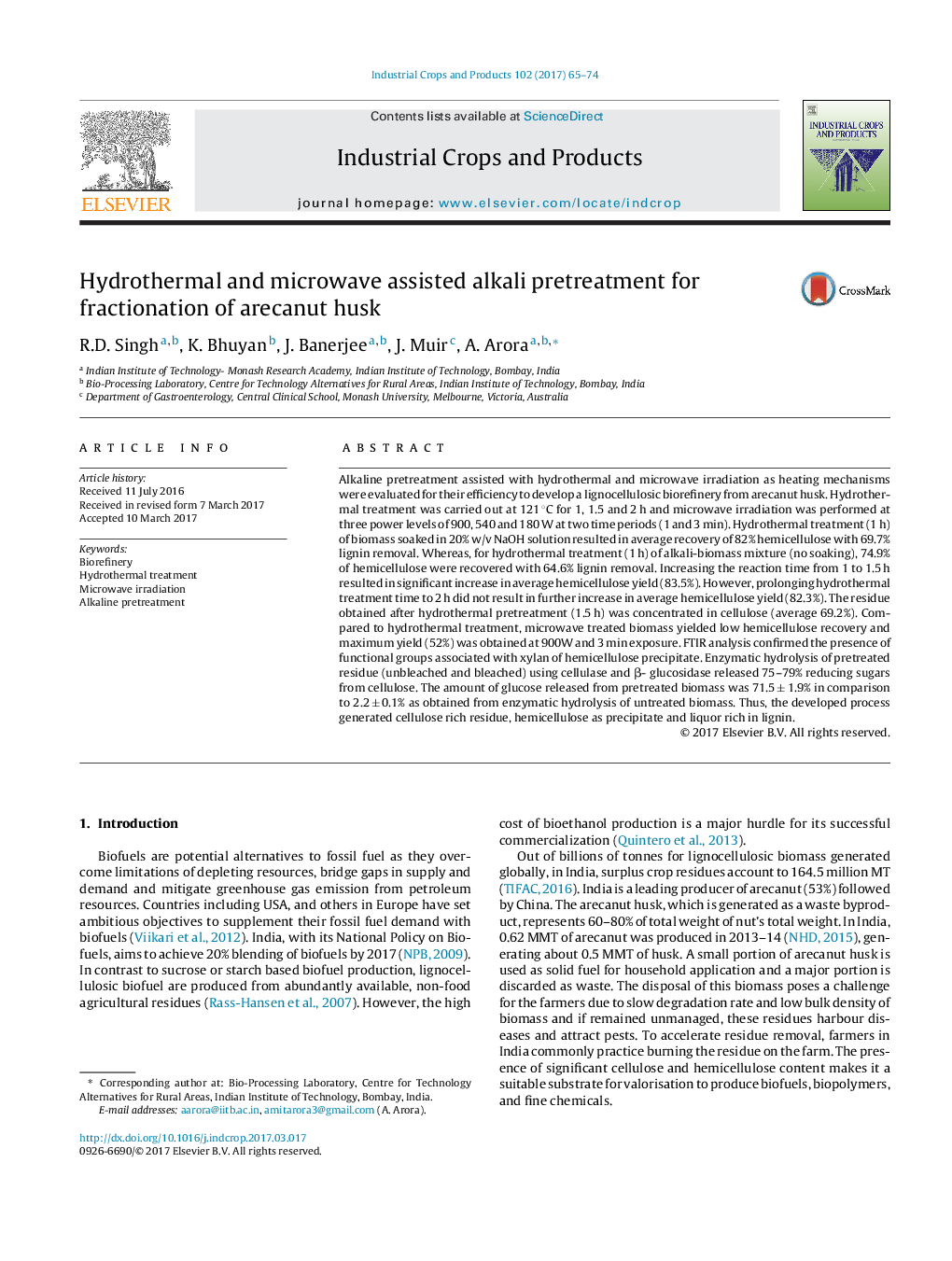| Article ID | Journal | Published Year | Pages | File Type |
|---|---|---|---|---|
| 5762155 | Industrial Crops and Products | 2017 | 10 Pages |
Abstract
Alkaline pretreatment assisted with hydrothermal and microwave irradiation as heating mechanisms were evaluated for their efficiency to develop a lignocellulosic biorefinery from arecanut husk. Hydrothermal treatment was carried out at 121 °C for 1, 1.5 and 2 h and microwave irradiation was performed at three power levels of 900, 540 and 180 W at two time periods (1 and 3 min). Hydrothermal treatment (1 h) of biomass soaked in 20% w/v NaOH solution resulted in average recovery of 82% hemicellulose with 69.7% lignin removal. Whereas, for hydrothermal treatment (1 h) of alkali-biomass mixture (no soaking), 74.9% of hemicellulose were recovered with 64.6% lignin removal. Increasing the reaction time from 1 to 1.5 h resulted in significant increase in average hemicellulose yield (83.5%). However, prolonging hydrothermal treatment time to 2 h did not result in further increase in average hemicellulose yield (82.3%). The residue obtained after hydrothermal pretreatment (1.5 h) was concentrated in cellulose (average 69.2%). Compared to hydrothermal treatment, microwave treated biomass yielded low hemicellulose recovery and maximum yield (52%) was obtained at 900W and 3 min exposure. FTIR analysis confirmed the presence of functional groups associated with xylan of hemicellulose precipitate. Enzymatic hydrolysis of pretreated residue (unbleached and bleached) using cellulase and β- glucosidase released 75-79% reducing sugars from cellulose. The amount of glucose released from pretreated biomass was 71.5 ± 1.9% in comparison to 2.2 ± 0.1% as obtained from enzymatic hydrolysis of untreated biomass. Thus, the developed process generated cellulose rich residue, hemicellulose as precipitate and liquor rich in lignin.
Related Topics
Life Sciences
Agricultural and Biological Sciences
Agronomy and Crop Science
Authors
R.D. Singh, K. Bhuyan, J. Banerjee, J. Muir, A. Arora,
